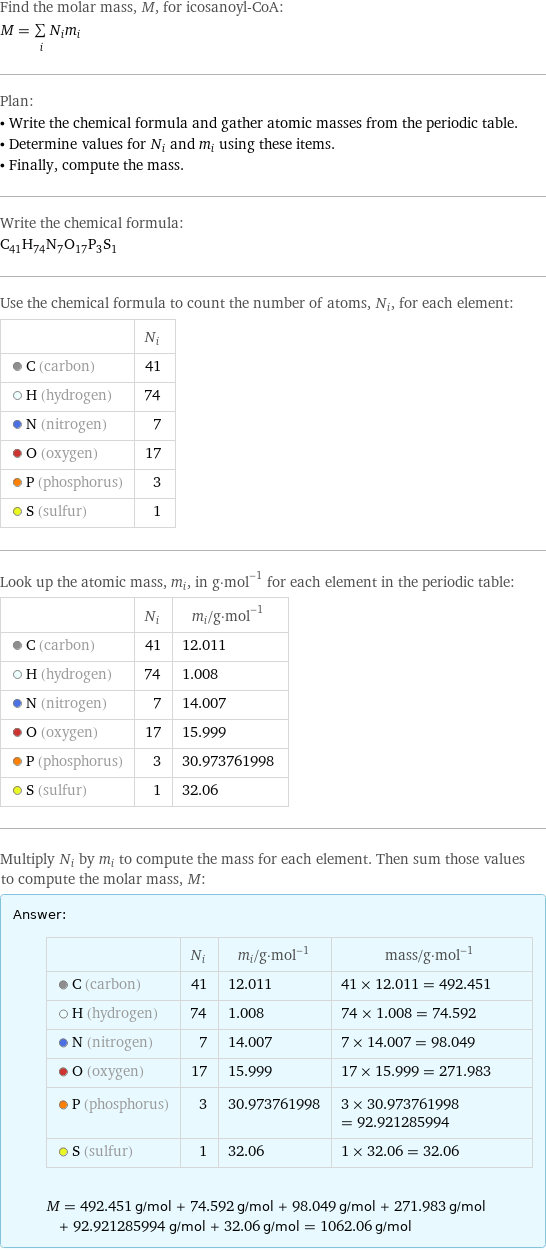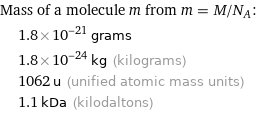Input interpretation

icosanoyl-CoA | molar mass
Result

Find the molar mass, M, for icosanoyl-CoA: M = sum _iN_im_i Plan: • Write the chemical formula and gather atomic masses from the periodic table. • Determine values for N_i and m_i using these items. • Finally, compute the mass. Write the chemical formula: C_41H_74N_7O_17P_3S_1 Use the chemical formula to count the number of atoms, N_i, for each element: | N_i C (carbon) | 41 H (hydrogen) | 74 N (nitrogen) | 7 O (oxygen) | 17 P (phosphorus) | 3 S (sulfur) | 1 Look up the atomic mass, m_i, in g·mol^(-1) for each element in the periodic table: | N_i | m_i/g·mol^(-1) C (carbon) | 41 | 12.011 H (hydrogen) | 74 | 1.008 N (nitrogen) | 7 | 14.007 O (oxygen) | 17 | 15.999 P (phosphorus) | 3 | 30.973761998 S (sulfur) | 1 | 32.06 Multiply N_i by m_i to compute the mass for each element. Then sum those values to compute the molar mass, M: Answer: | | | N_i | m_i/g·mol^(-1) | mass/g·mol^(-1) C (carbon) | 41 | 12.011 | 41 × 12.011 = 492.451 H (hydrogen) | 74 | 1.008 | 74 × 1.008 = 74.592 N (nitrogen) | 7 | 14.007 | 7 × 14.007 = 98.049 O (oxygen) | 17 | 15.999 | 17 × 15.999 = 271.983 P (phosphorus) | 3 | 30.973761998 | 3 × 30.973761998 = 92.921285994 S (sulfur) | 1 | 32.06 | 1 × 32.06 = 32.06 M = 492.451 g/mol + 74.592 g/mol + 98.049 g/mol + 271.983 g/mol + 92.921285994 g/mol + 32.06 g/mol = 1062.06 g/mol
Unit conversion

1.0621 kg/mol (kilograms per mole)
Comparisons

≈ 1.5 × molar mass of fullerene ( ≈ 721 g/mol )

≈ 5.5 × molar mass of caffeine ( ≈ 194 g/mol )

≈ 18 × molar mass of sodium chloride ( ≈ 58 g/mol )
Corresponding quantities

Mass of a molecule m from m = M/N_A: | 1.8×10^-21 grams | 1.8×10^-24 kg (kilograms) | 1062 u (unified atomic mass units) | 1.1 kDa (kilodaltons)

Relative molecular mass M_r from M_r = M_u/M: | 1062